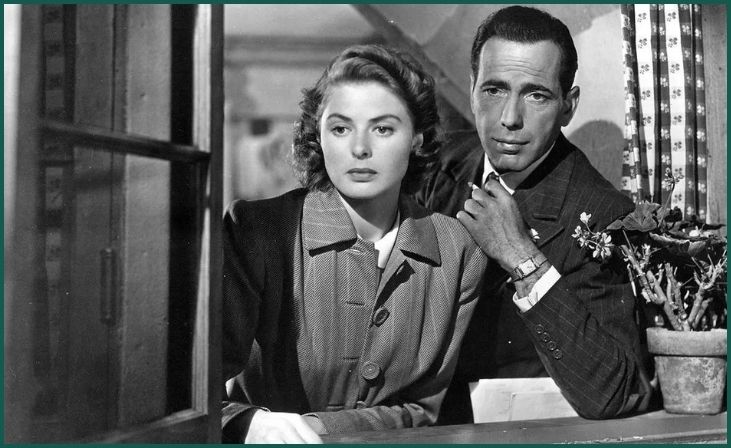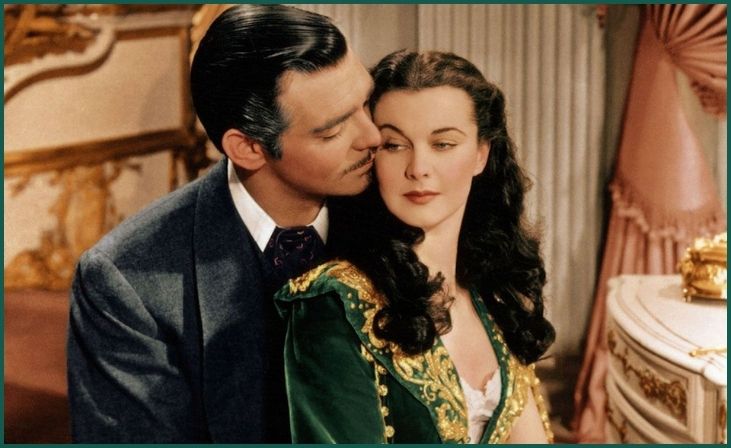Classic Movies Everyone Should Watch at Least Once – In the vast tapestry of cinematic history, classic movies serve as timeless pillars, offering audiences a window into bygone eras, stirring emotions, and sparking contemplation. These cinematic gems, often revered for their artistry, innovation, and cultural significance, transcend generations, leaving an indelible mark on the collective consciousness. From the sweeping romance of “Casablanca” to the epic grandeur of “Gone with the Wind,” classic movies encapsulate the essence of storytelling in its purest form. Each frame is a brushstroke on the canvas of human experience, weaving narratives that resonate across time and space. As we embark on a journey through eight essential classics, we delve into worlds of intrigue, adventure, and introspection, guided by the visionary filmmakers who dared to push the boundaries of imagination and creativity. These films are not merely entertainment; they are portals to the past, mirrors to the present, and beacons guiding us toward a deeper understanding of the human condition. Join us as we celebrate these cinematic treasures and embark on an exploration of their enduring legacy.
Table of Contents
ToggleClassic Movies Everyone Should Watch at Least Once
Casablanca (1942):

Set against the backdrop of World War II, “Casablanca” is a timeless romantic drama directed by Michael Curtiz. Starring Humphrey Bogart as Rick Blaine and Ingrid Bergman as Ilsa Lund, the film follows the story of love, sacrifice, and redemption in the Moroccan city of Casablanca. Filled with memorable quotes like “Here’s looking at you, kid” and “We’ll always have Paris,” the film has become a classic in cinema history. Its iconic characters and emotionally charged narrative continue to captivate audiences worldwide, cementing its status as one of the greatest films ever made.
Also, Read – 7 Horror Movies We Expect to Rattle Us in 2024
Gone with the Wind (1939):

Adapted from Margaret Mitchell’s Pulitzer Prize-winning novel, “Gone with the Wind” is an epic historical romance directed by Victor Fleming. Set in the American South during the Civil War and Reconstruction era, the film chronicles the tumultuous life of Scarlett O’Hara (Vivien Leigh) as she navigates love, loss, and survival. With its sweeping cinematography, lavish production design, and iconic performances by Clark Gable as Rhett Butler and Olivia de Havilland as Melanie Hamilton, “Gone with the Wind” remains a monumental achievement in filmmaking, earning eight Academy Awards including Best Picture.
The Godfather (1972):

Directed by Francis Ford Coppola and based on Mario Puzo’s novel, “The Godfather” is a landmark crime drama that follows the Corleone crime family’s patriarch, Vito Corleone (Marlon Brando), and his son Michael (Al Pacino). Set in post-World War II America, the film explores themes of power, loyalty, and family as the Corleones navigate the treacherous underworld of organized crime. With its gripping narrative, complex characters, and unforgettable dialogue (“I’m gonna make him an offer he can’t refuse”), “The Godfather” is widely regarded as one of the greatest films ever made, spawning two sequels and influencing countless works in popular culture.
Citizen Kane (1941):

Orson Welles’ directorial debut, “Citizen Kane,” is a groundbreaking masterpiece that revolutionized the art of filmmaking. Inspired by the life of newspaper magnate William Randolph Hearst, the film explores the enigmatic life and legacy of Charles Foster Kane (played by Welles), a wealthy and influential tycoon. Through innovative narrative techniques such as flashbacks and deep focus cinematography, “Citizen Kane” offers a compelling examination of power, ambition, and the complexities of human nature. Praised for its technical prowess, complex storytelling, and timeless themes, the film continues to be studied and celebrated by cinephiles and scholars alike as a testament to the power of cinema.
Don't just scroll, subscribe!
BuzzTrail's unique web-stories are the cure for boredom you've been waiting for.
Also, Read – 8 The Best Disney Movies of All-Time
Schindler’s List (1993):

Directed by Steven Spielberg and based on the true story of Oskar Schindler, “Schindler’s List” is a powerful and emotionally resonant film set during the Holocaust. Liam Neeson stars as Schindler, a German businessman who saves the lives of over a thousand Jewish refugees by employing them in his factories. Shot in black and white to evoke the stark reality of the Holocaust, the film offers a harrowing portrayal of the atrocities committed by the Nazis and the resilience of the human spirit in the face of evil. With its poignant storytelling, gripping performances, and profound message of hope, “Schindler’s List” remains a cinematic landmark that continues to educate and inspire audiences worldwide.
Psycho (1960):

Alfred Hitchcock’s “Psycho” is a seminal psychological thriller that redefined the horror genre and left an indelible mark on cinema. Starring Anthony Perkins as the enigmatic Norman Bates, the film follows Marion Crane (Janet Leigh), who encounters terror and suspense after checking into the Bates Motel. Known for its iconic shower scene and shocking plot twists, “Psycho” subverts audience expectations and delves into the dark depths of the human psyche. Hitchcock’s masterful direction, coupled with Bernard Herrmann’s haunting score, creates an atmosphere of dread and suspense that continues to captivate audiences decades after its release. “Psycho” remains a timeless classic that has influenced countless filmmakers and remains a benchmark for psychological horror.
2001: A Space Odyssey (1968):

Directed by Stanley Kubrick and based on a short story by Arthur C. Clarke, “2001: A Space Odyssey” is a visionary sci-fi epic that transcends the genre. The film explores themes of evolution, artificial intelligence, and the search for meaning as it follows a voyage to Jupiter aboard the spaceship Discovery One. Known for its groundbreaking special effects, minimalist dialogue, and iconic imagery (such as the monolith and HAL 9000), “2001: A Space Odyssey” is a visual and auditory masterpiece that challenges viewers’ perceptions of time and space. Kubrick’s meticulous attention to detail and innovative storytelling techniques have cemented the film’s status as a cinematic landmark, inspiring generations of filmmakers and sparking endless debate and interpretation.
The Wizard of Oz (1939):

Based on L. Frank Baum’s novel, “The Wizard of Oz” is a beloved fantasy musical directed by Victor Fleming. Starring Judy Garland as Dorothy Gale, the film follows her journey through the magical land of Oz with her companions: the Scarecrow, the Tin Man, and the Cowardly Lion. Filled with iconic songs like “Over the Rainbow” and memorable characters such as the Wicked Witch of the West and the Wizard himself, “The Wizard of Oz” has enchanted audiences for generations with its timeless themes of friendship, courage, and self-discovery. Its enduring legacy, colorful visuals, and imaginative storytelling continue to make it a cherished classic for viewers of all ages.
Conclusion
As we close the curtains on this cinematic journey, let us carry with us the timeless wisdom, profound emotions, and enduring beauty encapsulated in these classic films. They are not just artifacts of the past but living testaments to the power of storytelling to transcend time and touch the human soul. May we continue to cherish and revisit these cinematic masterpieces, and may they inspire future generations to discover the magic of the silver screen. In the ever-evolving landscape of cinema, let us remember the enduring legacy of these classics and the invaluable lessons they impart.
FAQs
Why are these movies considered classics?
Why are these movies considered classics?
These movies are considered classics due to their enduring popularity, cultural significance, and influence on filmmaking. They often showcase groundbreaking storytelling, innovative techniques, and timeless themes that continue to resonate with audiences.
What makes these movies essential viewing experiences?
What makes these movies essential viewing experiences?
These movies offer a window into different eras, cultures, and perspectives, providing valuable insights into the human condition. They serve as touchstones in the history of cinema and offer opportunities for reflection, inspiration, and appreciation of artistic excellence.

